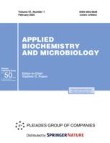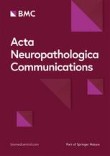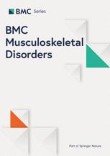|
Αρχειοθήκη ιστολογίου
-
►
2023
(269)
- ► Φεβρουαρίου (133)
- ► Ιανουαρίου (136)
-
►
2022
(2046)
- ► Δεκεμβρίου (165)
- ► Σεπτεμβρίου (161)
- ► Φεβρουαρίου (165)
-
►
2021
(3028)
- ► Δεκεμβρίου (135)
- ► Σεπτεμβρίου (182)
- ► Φεβρουαρίου (324)
-
▼
2020
(1051)
-
▼
Δεκεμβρίου
(292)
-
▼
Δεκ 01
(17)
- Transcriptome Analysis of Signaling Pathways in Ca...
- Properties and Biotechnological Application of Mut...
- Clusterin ameliorates tau pathology in vivo by inh...
- Cerebral organoids: emerging ex vivo humanoid mode...
- Successful conversion surgery of distal pancreatec...
- Beta- and Novel Delta-Coronaviruses
- Outcomes of tissue reconstruction in distal lower ...
- Prevalence and predictors of work-related musculos...
- Higher aggrecan 1-F21 epitope concentration in syn...
- Hybrid-Therapie eines Dysphagia-lusoria-Rezidives ...
- Besteht ein Zusammenhang zwischen der peripheren a...
- Infektionen in der Shuntchirurgie
- Gefäßmedizin in der ägyptischen Antike
- EUS is accurate in characterizing pancreatic cysti...
- Myocardial Perfusion Simulation for Coronary Arter...
- Adalimumab Biosimilars in the Treatment of Rheumat...
- Autotransplanted teeth including an evaluation of ...
-
▼
Δεκ 01
(17)
- ► Σεπτεμβρίου (60)
- ► Φεβρουαρίου (28)
-
▼
Δεκεμβρίου
(292)
-
►
2019
(2277)
- ► Δεκεμβρίου (18)
- ► Σεπτεμβρίου (54)
- ► Φεβρουαρίου (89)
-
►
2018
(26280)
- ► Δεκεμβρίου (189)
- ► Φεβρουαρίου (6130)
- ► Ιανουαρίου (7050)
-
►
2017
(33948)
- ► Δεκεμβρίου (6715)
- ► Σεπτεμβρίου (6470)
-
►
2016
(4179)
- ► Σεπτεμβρίου (638)
- ► Φεβρουαρίου (526)
- ► Ιανουαρίου (517)
Τρίτη 1 Δεκεμβρίου 2020
Transcriptome Analysis of Signaling Pathways in Caco-2 Cells Involved in the Formation of Intestinal Villi
Properties and Biotechnological Application of Mutant Derivatives of the Mini-Intein PRP8 from Penicillium chrysogenu m with Improved Control of C-Terminal Processing
|
Clusterin ameliorates tau pathology in vivo by inhibiting fibril formation
|
Cerebral organoids: emerging ex vivo humanoid models of glioblastoma
|
Successful conversion surgery of distal pancreatectomy with celiac axis resection (DP-CAR) with double arterial reconstruction using saphenous vein grafting for locally advanced pancreatic cancer: a case report
|
Beta- and Novel Delta-Coronaviruses
|
Outcomes of tissue reconstruction in distal lower leg fractures
|
Prevalence and predictors of work-related musculoskeletal disorders among workers of a gold mine in south Kivu, Democratic Republic of Congo
|
Higher aggrecan 1-F21 epitope concentration in synovial fluid early after anterior cruciate ligament injury is associated with worse knee cartilage quality assessed by gadolinium enhanced magnetic resonance imaging 20 years later
|
Hybrid-Therapie eines Dysphagia-lusoria-Rezidives mittels thorakalem Stentgraft und Transposition der A. subclavia
|
Besteht ein Zusammenhang zwischen der peripheren arteriellen Verschlusskrankheit und Parodontitis?
|
Infektionen in der Shuntchirurgie
|




